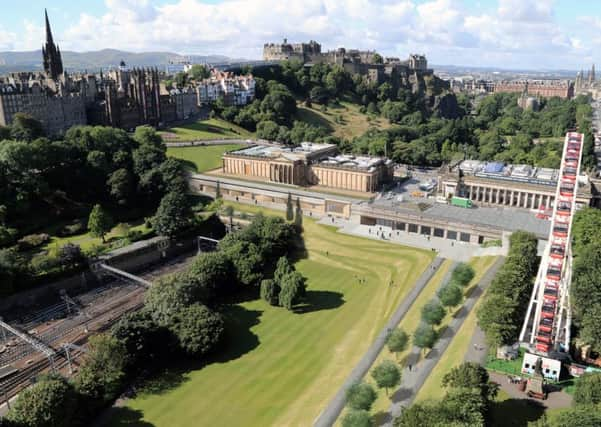Brian Ferguson: Heart-warming times for Scottish arts world


The next time I hear any grumbles about austerity measures hitting the Scottish arts world it will be hard to avoid recalling the events that have unfolded in Edinburgh in the last couple of weeks.
The first icy blasts of winter could undoubtedly be felt as the city’s six-week long winter festival began to take shape. But behind closed doors, in some of the city’s better-furnished boardrooms and cultural institutions, there is plenty to warm the cockles. After a period of careful lobbying, intense negotiating and the shaking of hands on carefully-worded agreements, the dust is settling on several key projects. Their value cannot be exactly determined, but is not far shy of £100 million. Some have been in the offing for decades, others have emerged within the last few weeks and demanded urgent attention. All appear to have been dealt with with a minimum of fuss and only a slight ruffling of feathers.
Advertisement
Hide AdPublicly-funded arts organisations and venues across the city, and indeed the country, may be bracing themselves for a round of cuts as a result of the nationwide spending squeeze. But their plight is a far cry from the kind of deals which have been put together to safeguard and enhance several jewels in the city’s cultural crown. Efforts to secure a new medium-sized concert venue in Edinburgh, which have been largely led by the Scottish Chamber Orchestra, have been going on for so long that I thought nothing of writing here a week ago that it was an idea that had yet to reach the starting blocks.
I’m sure that had nothing to do with the news a few days later that a site had been secured from RBS to deliver exactly such a scheme – behind its historic head office on St Andrew Square.
The burden of meeting much of the £45m price tag for the 1,000-seater auditorium and a host of other facilities will, seemingly, be met by the Dunard Fund, a trust set up by American arts philanthropist Carol Hogel. The same Dunard Fund is the driving-force behind a rival vision for the former Royal High School to the controversial plans which would see the A-listed building become a luxury hotel. If Ms Hogel’s trust gets its way, and the hotel developers with a long-standing agreement with the council step aside, it would become home to St Mary’s, Scotland’s only independent school dedicated to specialist music tuition. The bill would be upwards of £25m but, again, would be met by private donations.
Elsewhere in the world heritage site, work to give the Scottish collection of the National Galleries of Scotland a fitting home is finally about to get underway, even though there appears to be a gap of almost £10m to meet the £16.8m funding target. Enough substantial pledges, one can only assume, are in the bag.
If that project was not enough to be getting on with, the National Galleries has also managed to all but close a deal to secure the future of The Monarch of the Glen, removing it from a forthcoming auction in London, and securing a cut-price sale of £4m from whisky giant Diageo.
Then there is the increasingly curious case of Inverleith House, the contemporary art gallery closed by the Royal Botanic Garden at less than a fortnight’s notice in favour of more lucrative events. Within days, the move was facing international condemnation from more than 230 leading cultural figures and celebrities, some of whom are worth millions. Needless to say, the closure has been hastily revisited by the Botanics, where under-fire officials are now insisting no such thing was ever intended, that the gallery will remain an arts venue after all and that it has all been a terrible misunderstanding.